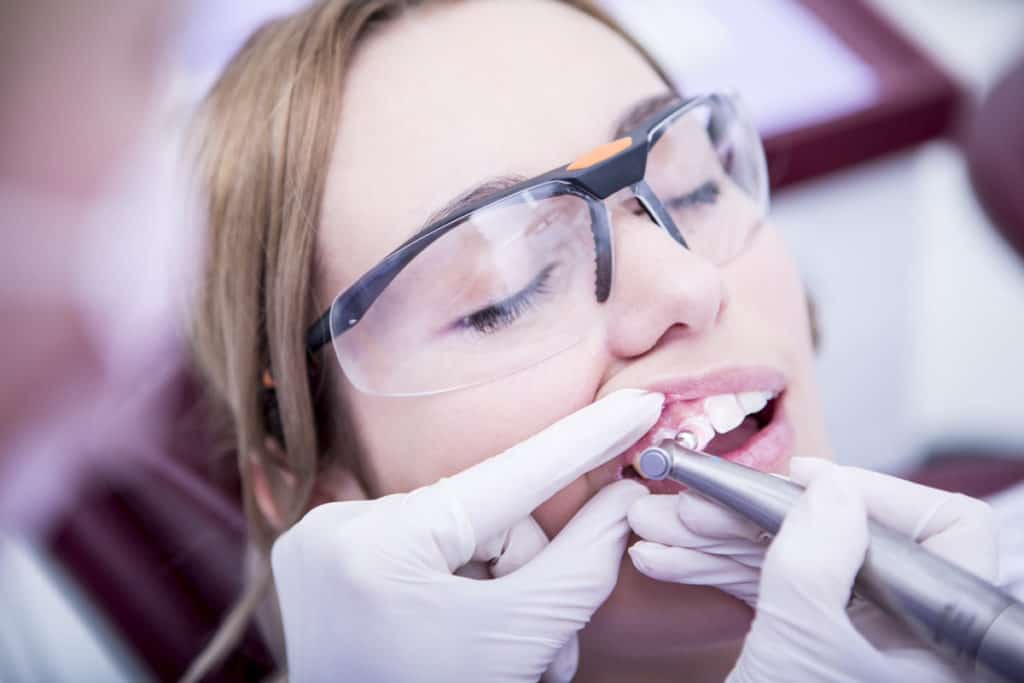Periodontics
Gum Recession

When gum tissue gradually recedes, it is referred to as gingival recession. If ignored, this condition can eventually expose the tooth root. The early stages of gum recession might be challenging to self-diagnose since the changes usually take place gradually and asymptomatically. Gum recession can be avoided with routine dental exams that also identify risk factors.
Gum recession symptoms include but are not limited to:
- Sensitive teeth – The dentin tubules underneath will be more sensitive to stimuli from the environment after the gums have receded far enough to reveal the cementum covering the tooth root.
- Visible roots – This is one of the most noticeable signs of a severe case of gum recession.
- teeth that seem longer. People who suffer gingival recession usually have a “toothy” smile. The tooth’s length is entirely normal, but because the gum tissue has receded, the teeth look longer than they actually are.
- bleeding, inflammation, and halitosis – These signs and symptoms are recognizable as periodontal disease or gingivitis. If a bacterial infection is not properly treated, the gums will begin to pull away from the teeth, which might result in tooth loss.
Causes of Gum Recession
Periodontists often identify and treat gum recession, which is a very common issue. It’s crucial to do a detailed assessment of the afflicted regions and to identify the true cause of the issue.
Following the identification of the root cause of the gum recession, both surgical and non-surgical techniques can be carried out to arrest its progression and stop it from happening again.
The following are the leading causes of gingival recession:
- Forceful brushing – Too much agression or too little brushing can nearly be harmful to the gums. Too much force during brushing or using a toothbrush with a strong bristle can erode the tooth enamel near the gum line and irritate or inflame the gum tissue.
- Oral hygiene issues. Plaque buildup can start to harm the teeth when brushing and flossing are done incorrectly or not at all. Numerous bacterial toxins found in the plaque have the potential to cause infection and destroy the jawbone underneath.
- Tobacco chewing – Tobacco usage, in particular, has serious repercussions on the whole oral cavity. When used repeatedly, it irritates the gingival lining of the mouth and results in gum recession.
- Periodontal disease. Periodontal disease may be brought on by systemic conditions like diabetes or by poor dental hygiene. Oral bacteria thrive in an environment that is ideal for them because of the extra sugars in people with diabetes’ mouths and their restricted blood vessels. The bacterium produces an infection that spreads ever-further into the bone and gum tissues, ultimately leading to tooth loss.
Gum Recession treatment
There are several treatments types for gum recession because each case is slightly unique. It is necessary to examine first, the nature of the issue that first led to the recession.
A softer toothbrush and a gentler brushing approach should be utilized if extremely harsh brushing methods are damaging the gums. Prophylaxis (professional dental cleaning) may be advised to clear the gum pockets of debris and germs if poor oral hygiene is an issue. Scaling and root planing will be done to treat gingival irritation and clean the teeth when there is a significant calculus (tartar) build-up on the teeth.
Once the underlying cause of the gingival recession has been treated, a more aesthetic or restorative kind of surgery may be suggested. In order to restore the gums’ natural symmetry and improve the aesthetics of the smile, gum tissue regeneration and gum grafting are two fantastic options.
Contact our clinic to talk with Dr. Elliott Weidman, our periodontist, if you have any queries or worries concerning periodontal disease, periodontal treatments, or gum recession.

Book Appointment
Do you need to see a dentist? We’re here to help. Book your next dental visit with ease.
FREE IMPLANT CONSULTATION
CATEGORIES
- Cracked tooth
- Avulsed tooth
- Broken, lost, or loose crown
- Gum abscess
- Broken denture
- Toothache
- Head injury such as a fall
- Loose implant
FOLLOW US

Book Appointment
Do you need to see a dentist? We’re here to help. Book your next dental visit with ease.

Book Appointment
Do you need to see a dentist? We’re here to help. Book your next dental visit with ease.
FREE IMPLANT CONSULTATION
Considering implants?
Schedule a 30-minute FREE, no-obligation office consultation with us.
Call (289) 815-5385 or complete an online appointment request.
CATEGORIES
- Cracked tooth
- Avulsed tooth
- Broken, lost, or loose crown
- Gum abscess
- Broken denture
- Toothache
- Head injury such as a fall
- Loose implant
FOLLOW US
Take a peek inside our dental office.
What Our Practice Looks

Mon - Thu: 8:30 AM - 5:00 PM
Alternating Fri: 10:00 AM - 3:00 PM
Follow Us
Contact Us

Mon - Thu: 8:30 AM - 5:00 PM
Alternating Fri: 10:00 AM - 3:00 PM
Follow Us
Contact Us
© All Rights Reserved aestheticimplantdentistry.ca
Privacy Policy | Terms of Use | Sitemap
A Dentistfind Website



